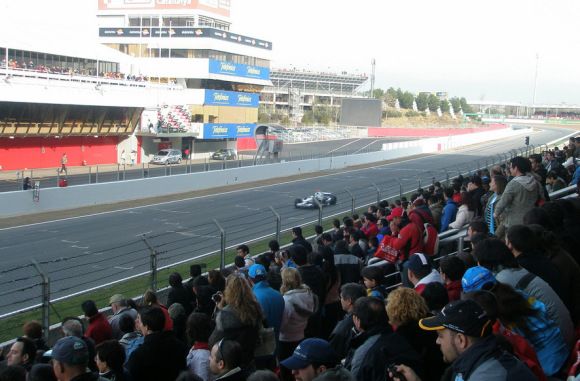Along with the recent idea to add a virtual safety car to yellow flag laps in Formula 1 racing, was another plan to allow cars that find themselves a lap behind when a safety car is sent out (when a nastier accident takes place), to drop back behind it, instead of racing ahead to catch up. The reason for this, is that it often takes a while for those cars that are that far behind to make it back into contention. Changing it to this system would get the race going faster. However, drivers and teams have rejected the idea, suggesting that it would give those at the back an unfair fuel advantage.
As it stands, when a safety car is sent out, those cars that have been lapped during the race have to make up time and catch up to the safety car, which can sometimes mean driving for quite a while if you are a long way behind. With the new system, dropping back would see each of those cars credited a lap, but understandably when you factor in vehicle wear and fuel, that would be hardly fair on the leaders. Similarly, it would screw with the very precise and heavily analysed lap time data that all of the teams collect to analyse what other racers and their support staff are doing.
Fans may not be so bothered by this, as the temptation to get the race (and therefore the entertainment) going again is always there. It’s the same reason they don’t want to see a safety car used whenever there is a crash, like the Americans do with their various high-speed racing sports. In this instance though, it seems like the teams and drivers may have a point, as skewing the stats and handing an unfair advantage to those in last place, is akin to a handicap, which isn’t something anyone wants introduced into the sport.
The virtual safety car system however, has gone over far better, with drivers suggesting that it simply needs tweaking to make it work correctly. It was initially tested during the Austin Grand Prix last month, where drivers were given a taste of how it would work during a practice lap. Drivers were given a minimum time that they had to hit for a certain section of track, which in turn was designed to moderate their speed by a set amount, essentially acting as a more controlled yellow-flag system.
To make it a little easier to comply with, the Brazilian Grand Prix that took place this weekend extended the zones which they have to hit the certain time/speed in to 200 metres (from 50) and gave drivers a 10 second warning before and after. This made it much easier for them to hit their intended speeds and will hopefully lead to a safer system over all.
